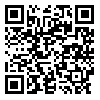1. Al-Amin ZM, Thomson M, Al-Qattan KK, Peltonen-Shalaby R & Ali M 2006.
2. Anti-diabetic and hypolipidaemic properties of ginger (Zingiber officinale) in streptozotocin-induced diabetic rats. Br J Nutr. 96 (4):
3. 660-666.
4. Ali BH, Blunden G, Tanira MO & Nemmar A 2008. Some phytochemical, pharmacological and toxicological properties of ginger (Zingiber officinale Roscoe): a review of recent research. Food Chem Toxicol. 46 (2): 409-420.
5. Alizadeh-Navaei R, et al. 2008. Investigation of the effect of ginger on the lipid levels. A double blind controlled clinical trial. Saudi Med J. 29 (9): 1280-1284.
6. Andallu B, Radhika B & Suryakantham V 2003. Effect of aswagandha, ginger and mulberry on hyperglycemia and hyperlipidemia. Plant Foods for Human Nutrition.(58): 1-7.
7. American Diabetes Association 2010. Diagnosis and classification of diabetes mellitus. Diabetes Care. 37 Suppl 1: S81-90.
8. Bhandari U, Kanojia R & Pillai KK 2005. Effect of ethanolic extract of Zingiber officinale on dyslipidaemia in diabetic rats. J Ethnopharmacol. 97 (2): 227-230.
9. Bordia A, Verma S & Srivastava K 1997. Effect of ginger (Zingiber officinale Rosc.) and fenugreek (Trigonella foenumgraecum L.) on blood lipids, blood sugar and platelet aggregation in patients with coronary artery disease. Prostaglandins, leukotrienes and essential fatty acids. 56 (5): 379-384.
10. Chrubasik S, Pittler M & Roufogalis B 2005. Zingiberis rhizoma: a comprehensive review on the ginger effect and efficacy profiles. Phytomedicine. 12 (9): 684-701.
11. ElRokh E-SM, Yassin NA, El-Shenawy SM & Ibrahim BM 2010. Antihypercholesterolaemic effect of ginger rhizome (Zingiber officinale) in rats. Inflammopharmacology. 18 (6): 309-315.
12. Esteghamati A, et al. 2008. Prevalence of diabetes and impaired fasting glucose in the adult population of Iran: National Survey of Risk Factors for Non-Communicable Diseases of Iran. Diabetes Care. 31 (1): 96-98.
13. Fink RI, Wallace P, Brechtel G & Olefsky JM 1992. Evidence that glucose transport is rate-limiting for in vivo glucose uptake. Metabolism. 41 (8): 897-902.
14. Fukuyama N, et al. 2008. Validation of the Friedewald Equation for Evaluation of Plasma LDL-Cholesterol. J Clin Biochem Nutr. 43 (1): 1-5.
15. Gilani AH & Rahman AU 2005. Trends in ethnopharmocology. J Ethnopharmacol. 100 (1-2): 43-49.
16. Grzanna R, Lindmark L & Frondoza CG 2005. Ginger-an herbal medicinal product with broad anti-inflammatory actions. J Med Food. 8 (2): 125-132.
17. Kamal R & Aleem S 2009. Clinical evaluation of the efficacy of a combination of zanjabeel (Zingiber officinale) and amla (Emblica officinalis) in hyperlipidaemia. Indian J trad. know. 8 (3): 413-416.
18. McGarry JD 2002. Banting lecture 2001: dysregulation of fatty acid metabolism in the etiology of type 2 diabetes. Diabetes. 51 (1): 7-18.
19. Paranjpe P, Patki P & Patwardhan B 1990. Ayurvedic treatment of obesity: a randomised double-blind, placebo-controlled clinical trial. J Ethnopharmacol. 29 (1): 1-11.
20. Parillo M & Riccardi G 2004. Diet composition and the risk of type 2 diabetes: epidemiological and clinical evidence. Br J Nutr. 92 (1): 7-19.
21. Randle PJ, Garland PB, Hales CN & Newsholme EA 1963. The glucose fatty-acid cycle. Its role in insulin sensitivity and the metabolic disturbances of diabetes mellitus. Lancet. 1 (7285): 785-789.
22. Roden M, et al. 1996. Mechanism of free fatty acid-induced insulin resistance in humans. J Clin Invest. 97 (12): 2859-2865.
23. Seidell JC 2000. Obesity, insulin resistance and diabetes--a worldwide epidemic. Br J Nutr. 83 Suppl 1: S5-8.
24. Shirdel Z, Mirbadalzadeh H & Madani H 2009. Anti-diabetic and anti lipidemic properties of ginger in comparison glibenclamide in alloxan-diabetes rat. Iran J Diab Lipid Disorders.(9): 7-15.
25. Singh AB, SN Akanksha S, Maurya R & . 2009. Anti-hyperglycaemic, lipid lowering and anti-oxidant properties of [6]-gingerol in db/db mice. Int. J. of Med & Med Sci. 12: 536-544.
26. Srivastava KC 1984. Aqueous extracts of onion, garlic and ginger inhibit platelet aggregation and alter arachidonic acid metabolism. Biomed Biochim Acta. 43 (8-9): S335-346.
27. Srivastava KC & Mustafa T 1992. Ginger (Zingiber officinale) in rheumatism and musculoskeletal disorders. Med Hypotheses. 39 (4): 342-348.
28. Surh YJ, Lee E & Lee JM 1998. Chemoprotective properties of some pungent ingredients present in red pepper and ginger. Mutat Res. 402 (1-2): 259-267.
29. Tripathi S, Maier KG, Bruch D & Kittur DS 2007. Effect of 6-gingerol on pro-inflammatory cytokine production and costimulatory molecule expression in murine peritoneal macrophages. J Surg Res. 138 (2): 209-213.
30. Verma SK, Singh M, Jain P & Bordia A 2004. Protective effect of ginger, Zingiber officinale Rosc on experimental atherosclerosis in rabbits. Indian J Exp Biol. 42 (7): 736-738.
31. Wang WH & Wang ZM 2005. [Studies of commonly used traditional medicine-ginger]. Zhongguo Zhong Yao Za Zhi. 30 (20): 1569-1573.
32. White B 2007. Ginger: an overview. Am Fam Physician. 75 (11): 1689-1691.
33. Wild S, Roglic G, Green A, Sicree R & King H 2004. Global prevalence of diabetes: estimates for the year 2000 and projections for 2030. Diabetes Care. 27 (5): 1047-1053.






